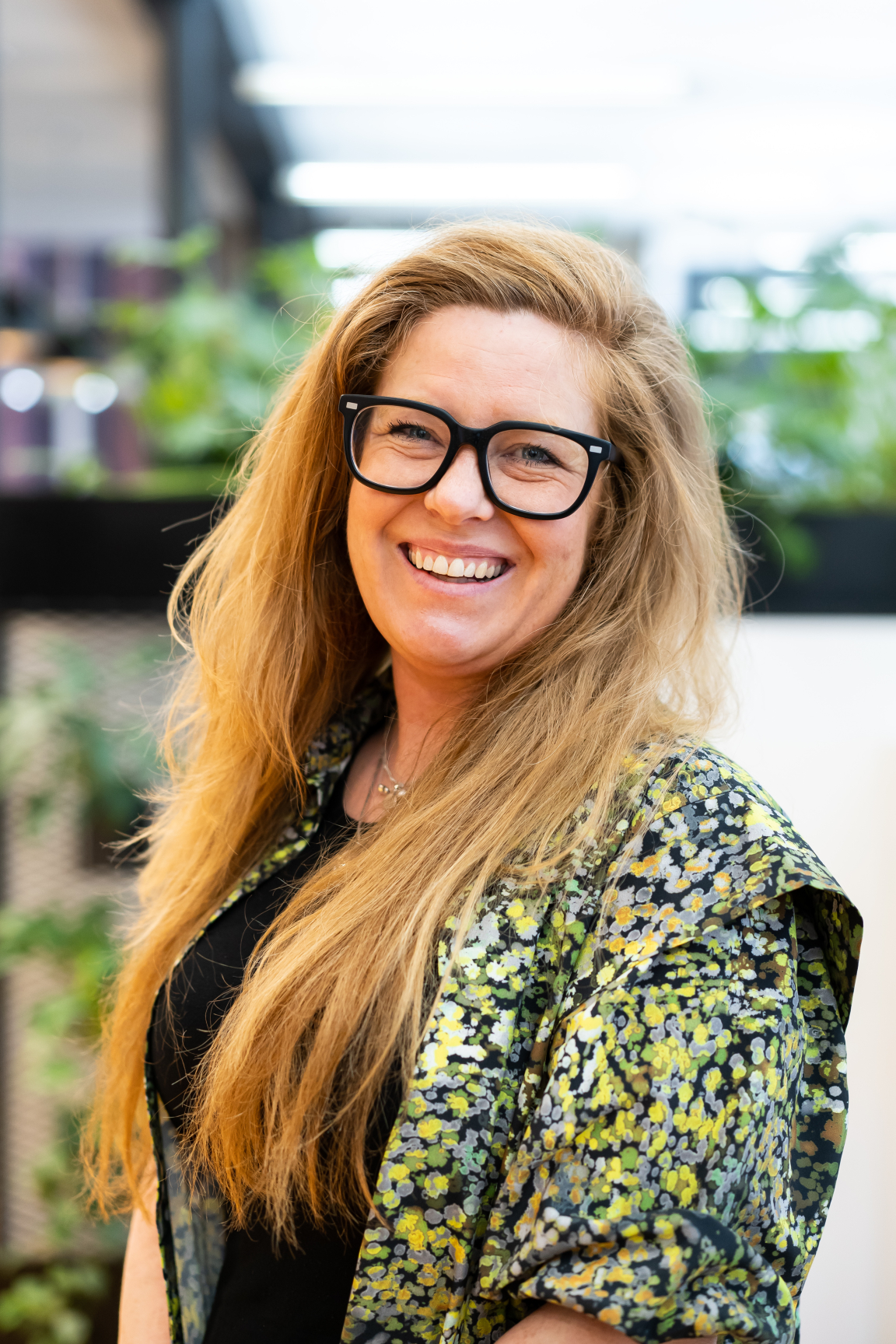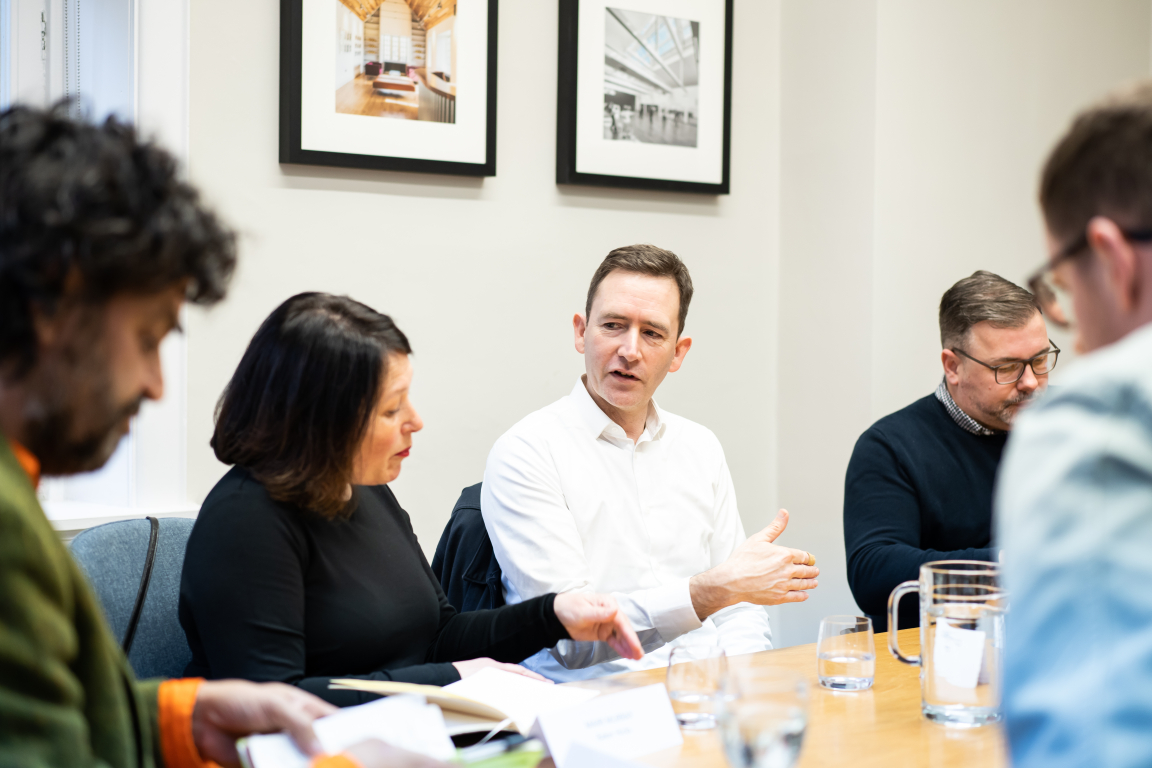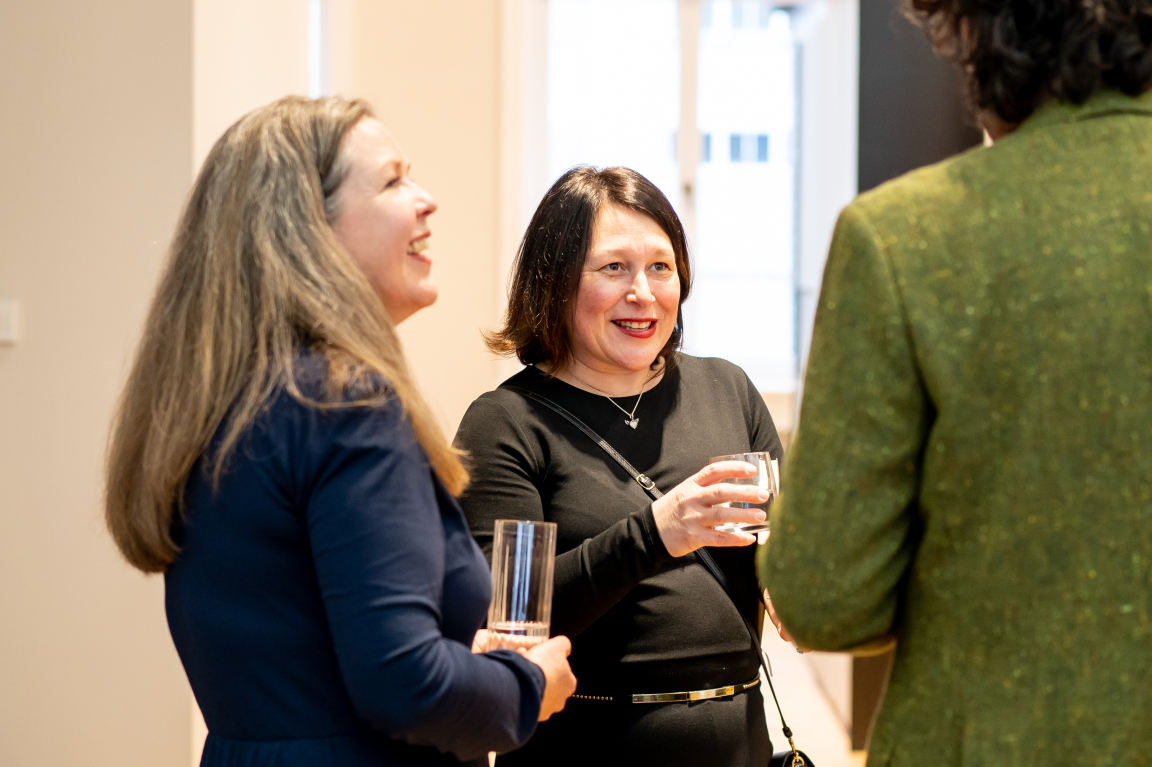What is the built environment doing to combat the climate crisis?

Victoria Middleton photography
A week after our successful sustainability seminar in Glasgow, which focused on the themes of ‘confusion, action and trust’, we returned to the subject and the city for an insight packed round table discussion in scenic studios of Harley Haddow.
On this occasion we focused solely on ‘action’, questioning what needs to happen right now for the industry to help broaden national efforts to reach net zero and wider sustainability targets.
Hosted by David Smalley, Director at Material Source Studio, we brought together a fantastic panel of thought leaders to dive further into the topic. Special thanks to you all, as well as to our co-sponsors for the evening, Altro and Crosswater.
Our guests

Edward Dymock, Architect Associate, BDP

Mairi Murray, Head of Sustainability, BakerHicks

Morag Dearsley, Associate, Form Design Consultants

Michael McGurk, Architect, Michael Laird Architects

April Burns, Senior Change Consultant, AECOM

Daniel Ross, Associate Director, Harley Haddow
David began the discussion by asking panellists to share the “big things” that they are currently hearing in the market with regards to sustainability. Daniel was quick to say that he felt this was an issue that was now really gaining traction and at the very top of the agenda, especially for funders. “To give you an example, we are currently working on the last building of a wider development that has been ongoing for the past decade. The funders explained at the last minute that they would only fund the project if it hit certain net zero initiatives. That was driven completely by the funder and it then drove the tenant and developer to work closer than I have ever seen before.”
Mairi echoed the view, saying she had had a similar recent experience in the education sector. “We have been working on a high school development for the past few years and all of a sudden the client said ‘can we go Passivhaus?”.
David asked Mairi how the client even knew about Passivhaus in the first place - a toolkit/system for designing a healthy low energy home or commercial building.
“Local authorities have to achieve certain standards to get certain funding and Passivhaus is discussed all the time,” she replied. “The point here is that people say ‘let’s go Passivhaus, let’s go net zero’ without actually understanding what you have to do to achieve it and to get a team on board to meet these requirements at the right time - For me there is wider education piece here for us as the experts to collaborate with the local authorities, clients etc in order for them to fully appreciate and understand what you actually have to do to achieve these standards.”

Victoria Middleton photography
Metrics
Edward turned the debate to a wider conversation about the complexity of standards. “There are now so many different metrics such as energy use and carbon intensity. The frustration for me personally - particularly as I am working working across different continents - is that I cannot easily compare the outcomes of all of our projects – the metrics reported, and tools used to create them, vary and numbers alone rarely tell the whole story. That is one thing that Passivhaus does very well for ‘energy in use’. There is a peer review process throughout the design, with a degree of technical checking, so designers and clients can have more faith that the product promised is the product delivered.”
Mairi said too much of the sustainability debate was focused solely on the “tunnel vision” of a carbon focus. “Sustainability is about so much more than just carbon. Passivhaus focuses on energy, but BREEAM makes you focus on more 9 other elements of the building that encompass the wellbeing of the people that use it, the landscape and the ecology and the materials used. So Passivhaus is great for making sure your building is the most energy efficient ever, but adding BREEAM onto that gives you that holistic approach. It is about how a building is built and how people use it, and much more than just the energy.”
Edward agreed: “Yes, as Mairi alludes, wellbeing and health are much wider issues that deserve their own focus, sometimes aided by assessments such as BREEAM or WELL. For instance, I am a champion of biophilic design and the impact it can have on wellbeing. Whilst it is not just about having living plants in a building, I believe this is almost always a good thing.”

Victoria Middleton photography

Victoria Middleton photography
Occupancy rates
The conversation then moved on to a very live issue, namely the poor occupancy rates of many office buildings in the wake of the pandemic, and its impact on sustainability. As Mairi added: “Occupancy rates have an effect on Passivhaus because you design a thermally efficient building to have x amount of occupants, using their body heat to bring a building up to a certain temperature. So there are complications if people are not coming into the office.”
Morag spoke for many when she said she felt we were still “in a state of flux” post-Covid and people were still finding their way in their working lives. “A lot depends on the type of company you work for. If you are someone who sits behind a computer all day then do you really need to come into the office? If you come in to collaborate it’s different, but there’s not much point forcing people to come into the office just to sit behind a desk.”
April said younger workers in particular were seeking a return to the office for social connections. “They have been stuck in their flats, they want to come back. So this is about having organisations that are open-minded to that because you may have companies that are fearful of putting in ping pong tables or big social spaces. But organisations need to think differently, they need to ask what is driving workers to come into the office.”
Daniel added: “What you hear is that some people want to come in to the office, some don’t. Businesses are now starting to look at how they incentivise staff to come in, and the model you hear about is the nine-day fortnight. Is this maybe a stepping-stone to an acceptance of the four-day work week?”

Victoria Middleton photography
Commuting vs unoccupied building
The panel agreed that on the one hand there was an obvious negative impact on sustainability and energy efficiency from empty or half-used offices. On the other, there were clear environmental benefits of less people commuting in terms of a reduction in car emissions.
Mairi said organisations have to start thinking more creatively and innovatively. “In one of our UK offices we have a rather strange layout with a light well in the middle. So we have made it a more collaborative space, taking desks out and replaced them with sofas, whiteboards, and more interactive spaces.” She said this helped change mindsets. “People start thinking ‘I’m not coming in just to sit at another desk like I do at home, I’m coming in to do some collaborative work.”
The panel concurred that emissions from commuting remained a challenge, especially where offices were not built near urban centres and away from public transport, so employees were forced to use their cars. Edward said a new national planning framework should start helping in this regard. “We should hopefully see a new sustainability logic. The Scottish government has a pretty progressive agenda in terms of sustainability and social mobility, and a national planning framework is trying to lock that into planning policy. It is difficult to see the day-to-day measurable impact at the moment, but the policy is moving in the right direction.” Daniel added that if you took a step back, one of BREEAM’s big focuses was actually transport links.
Personal responsibility
The debate concluded with what specific action both individuals and product designers can take in response climate change.
Edward shared a very personal viewpoint, talking about how he had made the conscious decision not to fly for leisure purposes. “An emergency deserves emergency behaviour so I’m trying to change my own personal behaviours. In fact, I haven’t flown for pleasure for 18 years - the climate emergency isn’t new. Air travel is a particular problem. I recently asked a friend if they were offsetting a flight. It revealed a lot of cynicism for offsetting, which I can understand, but more worryingly - excuses that the actions of the UK would have no impact on the climate emergency They argued that if the UK only accounts for 1.7% of global climate emissions, which feels like a really small number, what difference can we make? However, more than 20 other countries have emissions of around 1% so if we don’t think collectively we have a problem. If we are not going to bother, what about the other 20 countries? We also need to recognise that as we were key to the industrial revolution, and profiting from it, we have a particular responsibility.”
“I believe we have a moral duty to do what we can in both our personal and professional lives – we can affect change in our own lives and influence behaviours in others. As construction professionals and product suppliers we can all do really great things to make buildings a little greener, but the green buildings we design need to be full of green people. So as advocates for sustainability, all of us in this room need to understand the arguments and learn how to communicate so people really listen.”

Victoria Middleton photography

Victoria Middleton photography
Education, education…
Further to Mairi’s earlier comments, Michael added that it all came back to education and the role that everyone has to play, whether shareholders, investors, or clients. He stressed that there were already positive signs of action and the industry had good stories to tell. David agreed, saying we were at an inflexion point where consultants and architects were now asking suppliers key questions around sustainability. “Surely that ultimately has to be a good thing”.
Further reading, courtesy of our panel
TED talks: How to speak so that people want to listen | Julian Treasure - YouTube
TED Talks : How to grow fresh air by Kamal Meattle - YouTube
Projects:
Policy and thought leadership:
Learning Estate Investment Programme - Scottish Futures Trust







